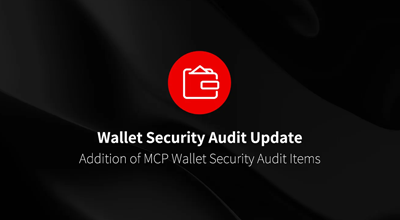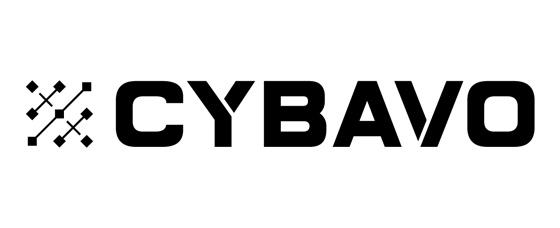Processing Flow
Business Communication
Project Evaluation
Pay for Expenses
Security Audit
Issue a Report
| Audit Class | Audit Subclass | Black/Grey Box | White Box |
|---|---|---|---|
| Transfer security | Signature security audit | ||
| Deposit/Transfer security audit | |||
| Transaction broadcast security audit | |||
| Secret key security | Secret key generation security audit | ||
| Secret key storage security audit | |||
| Secret key usage security audit | |||
| Secret key backup security audit | |||
| Secret key destruction security audit | |||
| Insecure entropy source audit | |||
| Cryptography security audit | |||
| Web front-end security | Cross-Site Scripting security audit | ||
| HTTP response header security audit | |||
| Components security | Third-party components security audit | ||
| Communication security | Communication encryption security audit | ||
| Cross-domain transmission security audit | |||
| Architecture and business security | Wallet lock security audit | ||
| Business logic security audit | |||
| Architecture design security audit | |||
| Denial of Service security audit | |||
| User interaction security | WYSIWYS | ||
| AML | |||
| Anti-phishing | |||
| Pre-execution | |||
| Contact whitelisting | |||
| Password complexity requirements |
Note: For browser extension wallets, it is recommended to use a white box audit to ensure as much comprehensive audit coverage as possible.
| Audit Class | Audit Subclass | Black/Grey Box | White Box |
|---|---|---|---|
| Runtime environment security | App runtime environment detection | ||
| Source code security | Code decompilation detection | ||
| Permission security | App permissions detection | ||
| Storage security | File storage security audit | ||
| App cache security audit | |||
| SQLite storage security audit | |||
| Communication security | Communication encryption security audit | ||
| Server interface security | Interface security audit | ||
| Business security | Business logic security audit | ||
| Browser security | WebKit security audit | ||
| WebView DOM security audit | |||
| Application interaction security | Deeplinks security audit | ||
| Authentication security | Client-Based Authentication Security audit | ||
| Transfer security | Signature security audit | ||
| Deposit/Transfer security audit | |||
| Transaction broadcast security audit | |||
| Secret key security | Secret key generation security audit | ||
| Secret key storage security audit | |||
| Secret key usage security audit | |||
| Secret key backup security audit | |||
| Secret key destruction security audit | |||
| Insecure entropy source audit | |||
| Cryptography security audit | |||
| Components security | Third-party components security audit | ||
| Runtime security | Screenshot/screen recording detection | ||
| Paste copy detection | |||
| Keyboard keystroke cache detection | |||
| Background obfuscation detection | |||
| Suspend evoke security audit | |||
| User interaction security | WYSIWYS | ||
| AML | |||
| Anti-phishing | |||
| Pre-execution | |||
| Contact whitelisting | |||
| Password complexity requirements |
Note: For mobile and desktop wallets, it is recommended that a white box audit be used when the audit cost is sufficient. If the audit cost is insufficient, it is also necessary to ensure that the black box and the gray box are the main audit methods and the white box is the auxiliary audit method, so as to ensure as much comprehensive audit coverage as possible.
| Audit Class | Audit Subclass | Grey Box | White Box |
|---|---|---|---|
| Hardware security | Security standards compliance audit | ||
| Circuit design security audit | |||
| Hardware integrity security audit | |||
| Firmware security | Firmware storage security audit | ||
| Firmware upgrade security audit | |||
| Firmware integrity security audit | |||
| Firmware decompilation security audit | |||
| Firmware configuration security audit | |||
| Storage security | Data storage security audit | ||
| Exception handling security | Error handling security audit | ||
| Exception logs security audit | |||
| Permission security | App permissions detection security audit | ||
| Communication security | Communication encryption security audit | ||
| Device interface security | Device interface security audit | ||
| Business security | Business logic security audit | ||
| Authentication security | Device-Based authentication security audit | ||
| Transfer security | Signature security audit | ||
| Deposit/Transfer security audit | |||
| Transaction broadcast security audit | |||
| Secret key security | Secret key generation security audit | ||
| Secret key storage security audit | |||
| Secret key usage security audit | |||
| Secret key backup security audit | |||
| Secret key destruction security audit | |||
| Insecure entropy source audit | |||
| Cryptography security audit | |||
| Components security | Third-party components security audit | ||
| User interaction security | WYSIWYS | ||
| Password complexity requirements |
Note: For hardware wallet, it is recommended to use a white box audit to ensure as much comprehensive audit coverage as possible.
| Audit Class | Audit Subclass | White Box |
|---|---|---|
| Configuration security | Environment variable configuration security audit | |
| Transport configuration security audit | ||
| API configuration security audit | ||
| Permission security | MCP permissions detection | |
| Authentication & Authorization security | Monitored access security audit | |
| Built-in Approval Workflows security audit | ||
| MCP lifecycle security | Initialization security audit | |
| Operation security audit | ||
| Shutdown security audit | ||
| Transports security | STDIO/Streamable HTTP security audit | |
| Context security | Prompt leaking security audit | |
| Prompt injection security audit | ||
| Context pollution security audit | ||
| Sampling security | Sampling and Prompts dynamic workflows security audit | |
| Business security | Business logic security audit | |
| Components security | Third-party components security audit | |
| API security | Input and Output security audit | |
| Transmission security audit | ||
| Error handling security audit | ||
| Resource control security audit | ||
| Log security | Audit Trails and Monitoring security audit | |
| Docking and deployment security | - | |
| Transfer security | Signature security audit | |
| Deposit/Transfer security audit | ||
| Transaction broadcast security audit | ||
| Secret key security | Secret key generation security audit | |
| Secret key storage security audit | ||
| Secret key usage security audit | ||
| Secret key backup security audit | ||
| Secret key destruction security audit | ||
| Insecure entropy source security audit | ||
| Cryptography security audit | ||
| User interaction security | WYSIWYS | |
| AML | ||
| Anti-phishing | ||
| Pre-execution | ||
| Contact whitelisting | ||
| Password complexity requirements |
Security Research
-
Dec 26 2025
Christmas Heist | Analysis of Trust Wallet Browser Extension Hack
Earlier this morning (Beijing time), @zachxbt posted in his channel, stating that “several Trust Wallet users reported that funds in their wallet addresses were stolen over the past few hours.” Shortly after, the official Trust Wallet X account issued a statement confirming that version 2.68 of the Trust Wallet browser extension contains a security risk, and advised all users running version 2.68 to immediately disable it and upgrade to version 2.69.

-
Dec 04 2025
Beware of Solana Phishing Attacks: Wallet Owner Permissions May Be Altered
Recently, we received a request for assistance from a user who fell victim to a phishing attack on the same day. The user discovered abnormal authorization records in their wallet and was unable to revoke the permissions. The affected wallet address provided is 9w2e3kpt5XUQXLdGb51nRWZoh4JFs6FL7TdEYsvKq6Wb.

-
Apr 30 2025
Addition of MCP Wallet Security Audit Items
Recently, the Model Context Protocol (MCP) has rapidly emerged as a key infrastructure component in the AI ecosystem, thanks to the efforts of organizations like Anthropic and swift adoption by tech giants such as OpenAI, Microsoft, and Google. By standardizing interfaces for seamless integration between AI systems and local tools, databases, and APIs, MCP significantly enhances the execution capabilities of intelligent agents. It has been dubbed the “USB-C of AI” by industry experts. The Web3 space has also begun to explore MCP-related applications. However, the protocol remains in an early, “chaotic” stage, facing multiple security risks and novel attack surfaces. Refer to SlowMist’s recently released MCP attack surface and security checklist for further insights.































